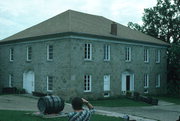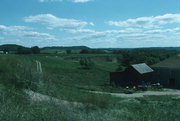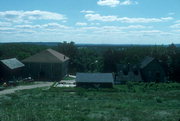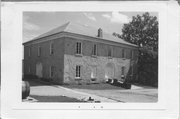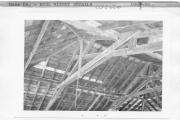Property Record
STATE HIGHWAY 188, .5 M S OF STATE HIGHWAY 60
Architecture and History Inventory
| Historic Name: | Kehl Winery - brewery |
|---|---|
| Other Name: | Wollersheim Winery |
| Contributing: | |
| Reference Number: | 12506 |
| Location (Address): | STATE HIGHWAY 188, .5 M S OF STATE HIGHWAY 60 |
|---|---|
| County: | Dane |
| City: | |
| Township/Village: | Roxbury |
| Unincorporated Community: | |
| Town: | 9 |
| Range: | 7 |
| Direction: | E |
| Section: | 6 |
| Quarter Section: | NW |
| Quarter/Quarter Section: | SW |
| Year Built: | 1859 |
|---|---|
| Additions: | |
| Survey Date: | 1975 |
| Historic Use: | brewery/distillery/winery |
| Architectural Style: | Italianate |
| Structural System: | |
| Wall Material: | Limestone |
| Architect: | |
| Other Buildings On Site: | |
| Demolished?: | No |
| Demolished Date: |
| National/State Register Listing Name: | Kehl Winery |
|---|---|
| National Register Listing Date: | 1/2/1976 |
| State Register Listing Date: | 1/1/1989 |
| National Register Multiple Property Name: |
| Additional Information: | See R # 5001, 12507. This scenic spot on a wooded hillside overlooking the Wisconsin River was used for winemaking as early as 1847, when Agoston Haraszthy, a Hungarian immigrant, settled here to run a river-ferry service and grow grapes. After two years in which his grapes froze in Wisconsin’s harsh winters, Haraszthy followed the gold rush to California. There he met with much greater success, becoming one of the founders of the California wine industry. Wisconsin winemaking did not die with Haraszthy’s departure, however. German immigrant Peter Kehl bought this vineyard and established the Kehl Winery in 1857. Descended from four generations of winemakers, Kehl planted hardier American grapevines and sold his wine to Catholic churches and hotels in Milwaukee. Kehl first built "the Cave," an arched tunnel in the hillside, lined with limestone blocks. It was both a wine cellar and Kehl’s home until he built his limestone house. The commodious new dwelling went up in three stages, beginning in 1858. Its walls appear to be made of random ashlar, but in fact the unknown mason employed a combination of rubble and quarried blocks, then overlaid the walls with raised joints, masking the rubble and lending the structure a more formal look. To create a rich texture, the mason chiseled some of the stones with a rough diamond-patterned surface. His craftsmanship is also evident in the finely tooled and rusticated quoins and in the elaborately carved spandrel, ornamented with grapes and vines, that frames the attic fanlight in the main gable end. In 1859, Kehl began building the handsome two-story winery. This time the mason used limestone blocks for one wall and rubble for the other three. He gave the structure a strong sense of solidity by employing stone quoins to reinforce the corners and by using voussoirs to form the segmental arches over the wide entry doors. The unusual coffered woodwork around the entries, the wooden sunburst over each door, and the denticulated cornice create a stylish formality. An especially severe frost destroyed all the vines in 1899, forcing the Kehls to close their winery, but in 1972 the Wollersheim family revived Wisconsin winemaking here. |
|---|---|
| Bibliographic References: | WISCONSIN STATE JOURNAL 9/4/1994. Buildings of Wisconsin manuscript. Perrin, Richard W. E., Historic Wisconsin Architecture, First Revised Edition (Milwaukee, 1976). |
| Wisconsin Architecture and History Inventory, State Historic Preservation Office, Wisconsin Historical Society, Madison, Wisconsin |

